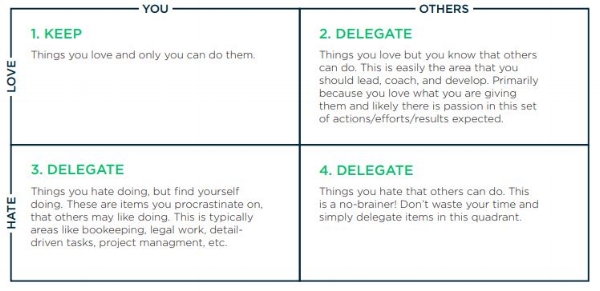It is my experience over many years of working with leaders that they do not like to think about topics that could be perceived as weak or powerless.
There is often a pervasive air of self-confidence and self-assurance that is required to lead others. Any crack in this proverbial leadership armor can be viewed as having an inability to lead.
Back in the 1940’s, several researchers independently described the relationship between personality and leadership behavior. One of the factors they noted was that individuals who scored highly on a factor known as neuroticism, or emotional instability, were not as effective at making good decisions or having the confidence needed to build strong relationships.
On one end of the neuroticism leadership personality dimension are leaders who are very temperamental. They are flippant in the expression of emotion, often not caring at all how they come across to others. Theses leaders see ordinary situations as threatening and even the smallest of irritations can set them off.
The other end of this spectrum are leaders who have emotional stability. They have a higher tolerance for stressful situations. Most things simply do not bother them, and if something does get under their skin they do not hold the frustration for long. Leaders who rate low on neuroticism are very optimistic in the face of setbacks and have a high level of hope for the future.
Leaders who score low on neuroticism are what we call in today’s positive psychology terminology, happy. Happiness, in the emotional intelligence world, is known as well-being.
My Story
I was walking through the Denver airport today waiting on a flight back to Orlando. I have about an hour before boarding the plane so I decided to take a walk around the terminal to get a little exercise and stretch my legs. As I was walking I noticed a little book store.
Since I am such a sucker for books (I actually have to put myself on a book budget as I could become book poor very quickly) I walked into the store telling myself I would just browse while I wait for my flight.
As I walked around, the book rack below was directly in my path. At first I did not pay any attention to the rack, but then something caught my eye. There was a mini-series from HBR press on emotional intelligence. I am a bit shocked that the shelf is relatively full with titles such as What Makes An Effective Executive by Peter Drucker, and the HBR business classic, Managing Oneself, based on the HBR best selling article.
The one title that is not full is the little book in the HBR series on emotional intelligence called Happiness.
Could it be that leaders are clamoring to figure out what it means to be happy? Could it be that they are wondering things like “What am I really doing with my life? What meaning or purpose am I deriving from my work?”
Questions like these are profound and impactful, yet they are not often thought about by those in leadership.
Perhaps one of the reasons the book shelf I ran into only had one copy of the book on happiness is because leaders are starting to become more curious about what happiness really means for them.
Something For You To Think About
According to Revue Bar-On, the father of the most popular model for trait emotional intelligence, one of the factors that impacts our ability as humans to be happy is our interpersonal relationships.
It goes without saying that leadership cannot exist without strong relationships.
A leader who has mutually satisfying relationships is able to get things done with other people by establishing trust and gaining commitments. The ability to maintain a strong rapport with others is both motivating and inspirational, which allows others to work hard and maintain a desire to meet challenging goals.
Leaders who are effective have an ability to maintain mutually satisfying relationships in both good times and not so good times.
The best leaders I observe have an ability to build these relationships with all kinds of people, even the most difficult. Regardless of how the leader feels personally about the person, really effective leaders are able to put differences aside and navigate the political landscape of any organization.
Great leaders can navigate any relational complexity to get things done.
How are you doing?
The leadership question I’d like you to reflect on this week is how are your interpersonal relationships?
Are your relationships allowing you to maximize your happiness, or are they holding you back?
Are your relationships mutually satisfying, meaning those you are in contact with feel they get as much out of the relationship as you do?
I want to affirm you as a leader today. Go out there and build the relationships you need to lead.





















